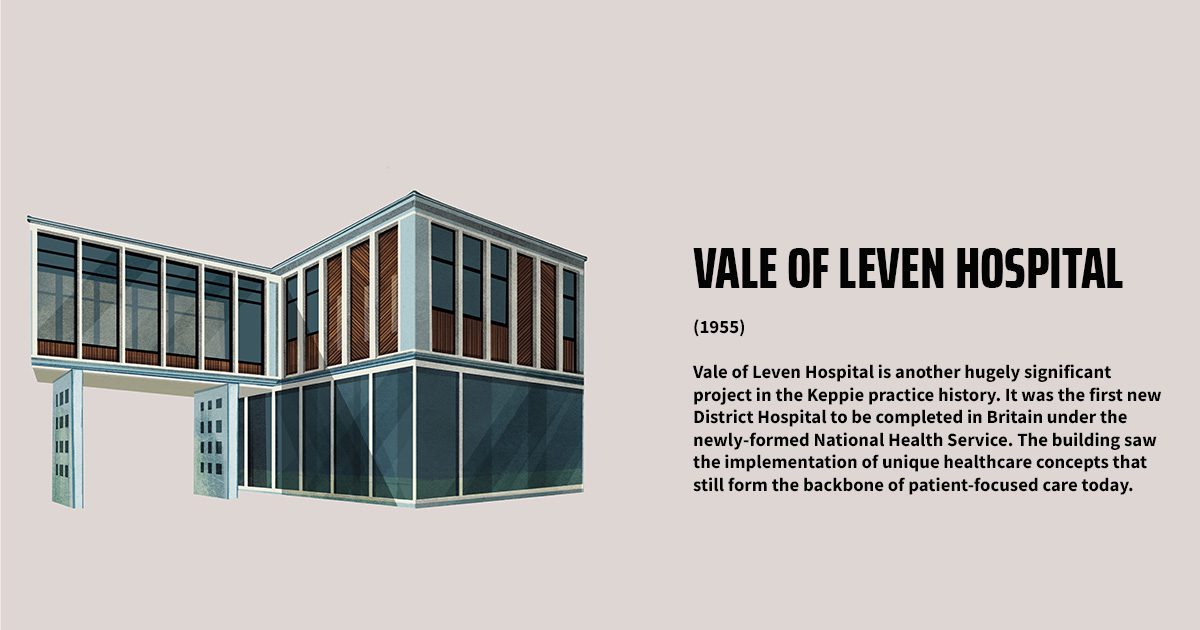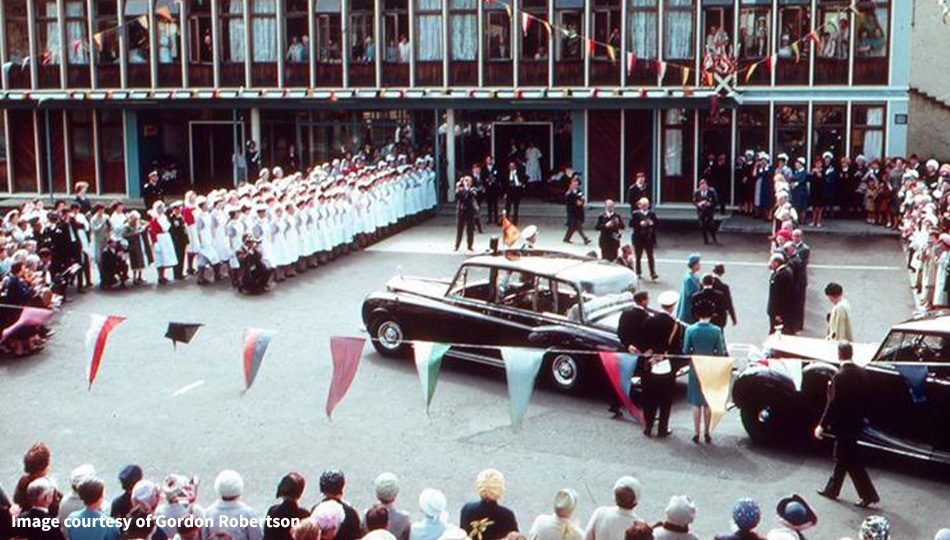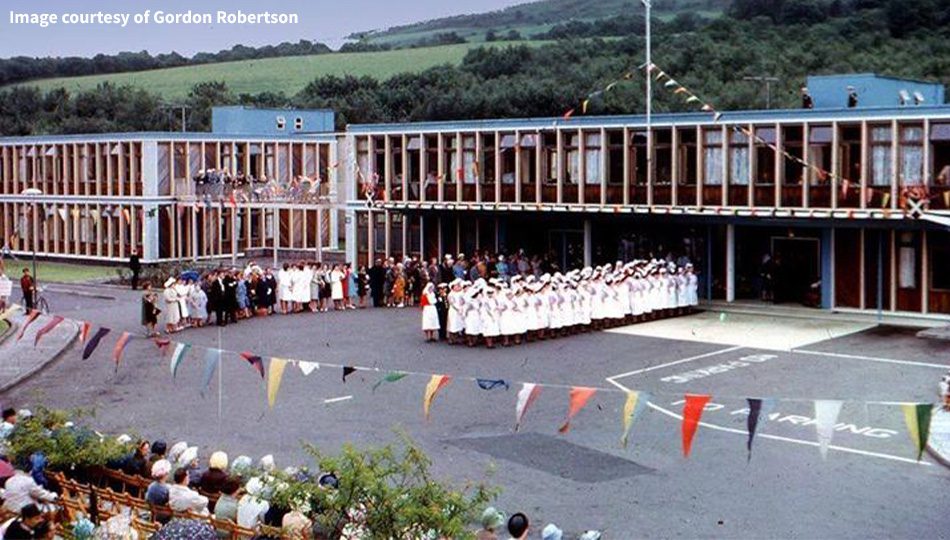Keppie at 170: Vale of Leven Hospital (3 of 12)
- Written by
- David Ross
- Listed in
- Posted on
- 29th Mar 2024

The National Health Service came into being on 5th July 1948 following Anuerin Bevan’s NHS Act of 1946, and the opportunity presented itself for the practice to develop a new specialism. John Keppie and Henderson’s first recorded healthcare project after the war was a TB unit at Stirling in 1952.
An outbreak of Poliomyelitis in 1954 led to a commission to convert Nightingale wards for polio treatment at the fever hospitals of Belvidere and Ruchill. And in 1955, the practice – now named John Keppie and Henderson and JL Gleave – completed Vale of Leven Hospital.
Vale of Leven Hospital was another first for the practice, the first new NHS District Hospital. Its architect was Joseph Lea Gleave, an academic known for his pioneering ideas, but often at odds with his more pragmatic, hard-edged commercial partners.


Whilst a student in 1931, Joseph Lea Gleave had won an international competition for the Columbus Memorial in the Dominican Republic (although it was not completed until 1992). From 1935 to 1950 he lectured at – and was latterly head of – Edinburgh College of Art.
Gleave became an authority on hospital design. With little hospital building since Victorian times, the subject was somewhat theoretical, inspiration being taken from Sweden where ideas had continued to develop while the Second World War ravaged the rest of Europe.
Graham Henderson headhunted Joe Gleave, who moved to Glasgow and bought Henderson’s house. And in 1952 – three years after the practice name changed to include him – Gleave got his chance to turn theory into practice with the commission for Vale of Leven Hospital, Balloch.


Vale of Leven Hospital was located in a valley and was to be no more than three storeys high so that the blast from a nuclear bomb dropped on Glasgow would pass over the top. Injured people in Glasgow could then be transferred out for treatment.
The low-rise healthcare ‘systems’ concept was developed here. External walls were formed with three-foot wide modular panels which could be dismantled for future extensions and alterations. This facility was little used, but it now forms the basis of most modern construction.
Other concepts of modern hospital design were born at Vale of Leven, including nurses stations and hospital streets. Basement corridors were used for servicing, ground floors for the public, and upper floors for staff.
Many hospitals at the beginning of the 21st century still didn’t have this segregation, with visitors, patients, staff, supplies, refuse, and the deceased often sharing the same corridors. Vale of Leven Hospital was completed in 1955 by the builder Angus MacDougall at a cost of £343,005.


Vale of Leven Hospital was a first for the practice; the first new NHS District Hospital. It saw the implementation of unique healthcare concepts that still form the backbone of patient-focused care today.
Seventy years on, we are developing the new Monklands Hospital, Scotland’s first Net Zero Carbon Digital Healthcare campus. Whilst technologically is rapidly changing healthcare provision, the same interest in a modular, adaptable people-focused concept still drives us.
But perhaps the most direct correlation between the unique innovation of Vale of Leven and our current practice attitude to healthcare lies in the work done at NHS Louisa Jordan at the start of the Covid-19 epidemic in March 2020. This was the practice statement printed on its conclusion:
“The days and nights that have passed since we became involved in this unique and unusual project have been simultaneously exhausting, challenging, inspiring, and enthralling. We’ve witnessed an industry that talks a lot about the importance of team working – of multi-discipline and contractor collaboration – put that into immediate, unquestioning, and trusting practice. Every cog and spoke of the wheel operating in sync to ensure it keeps turning and rolling towards its goal: the provision of a fully operational hospital capable of caring for over 1000 patients created from scratch in less than three weeks. Although we are hugely proud to have watched initial scribbles composed on sketch pads and i-pads turn into physical manifestations almost overnight, this has only been possible as a result of the dedication and commitment of every person involved.
From the fantastic SEC staff making their facilities and resources available to everyone at all times of the day, to those of the design and construction industry who gave their time and expertise selflessly. But perhaps most notable is the NHS staff themselves. Their adaptability and resilience leaves us in constant awe. Everyone involved in this remarkable project dearly hopes that it will not be needed, and that the measures already put in place by the Government ensure that our existing NHS personnel and our existing hospitals aren’t stretched beyond capacity. But if it is required, the NHS Louisa Jordan Hospital will be primed and ready; its patients being cared for by some of the most exceptional people we’ve come across.”
The NHS Louisa Jordan Hospital Design and Delivery Team 19th April 2020
